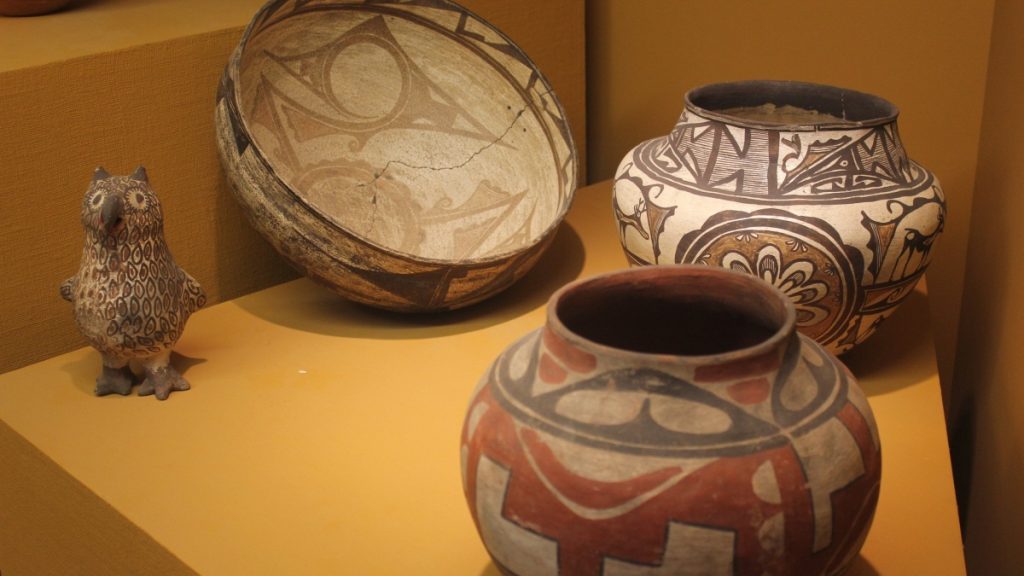Contents
Introduction
Pre-Columbian artifacts, encompassing stone and pottery, offer invaluable insights into the ancient societies that once flourished across the Americas. From Mesoamerican empires to Andean civilizations, artisans of these eras produced works that combined utility, beauty, and spiritual symbolism. These artifacts continue to fascinate scholars, collectors, and admirers, bridging ancient worlds with modern appreciation. This article examines how these pieces were made, their cultural importance, and why they remain captivating to contemporary audiences.
1. The Rich Legacy of Pre-Columbian Art
The art of pre-Columbian cultures was deeply intertwined with their culture, reflecting their values, beliefs, and daily practices. Stone carvings and pottery were more than decorative items; they were embedded with meanings that resonated throughout society. The legacy of these pieces transcends time, showcasing the ingenuity and cultural richness of the past.
2. Crafting Stone Artifacts: Skill and Symbolism
• Selecting the Materials
Artisans chose materials like jade, obsidian, and basalt based on availability and symbolic significance. Jade was prized for its association with life and power, while obsidian was valued for its sharpness and mystical properties. These stones were used to create items such as ceremonial masks and figurines.
• Traditional Methods of Shaping Stone
Pre-Columbian artisans developed specialized techniques for working with stone, using rudimentary tools made from bone, wood, and harder stones. Carving, grinding, and polishing these materials required immense skill and patience. They employed methods like abrasion without modern machinery to achieve intricate details and smooth finishes.
• Meaning and Use
Stone artifacts held significant cultural and religious significance. Masks and figurines were often found in sacred spaces or burial sites, where they were believed to serve as conduits to the spiritual world or as protective charms. The craftsmanship and symbolic power embedded in these works are key reasons they are still appreciated today.
3. The Pottery Traditions of Pre-Columbian Cultures
• Clay Sourcing and Pottery Techniques
Pottery was central to both daily life and ritual practices. Artisans sourced local clay, which was processed to create a workable medium. Techniques varied by region: Andean potters employed complex firing methods to enhance the durability of their ceramics, while Mesoamerican potters often used open-air firing to achieve different textures and finishes.
• Design and Decorative Elements
Pottery took many forms, from practical storage vessels to ceremonial effigies. Designs featured symbolic motifs, animals, and mythological scenes that carried cultural meaning. Pigments made from minerals and plants added color and the use of slips allowed for smooth surfaces. The Moche culture, for example, was known for its detailed portrait vessels, which depicted human faces with remarkable realism.
• Functional and Ritual Importance
Pottery had dual purposes in pre-Columbian life. Utilitarian items were used for cooking, storing food, and holding liquids, while intricately designed pieces were reserved for rituals. Many ceremonial vessels were placed in tombs as offerings or used in religious rites involving sacred substances. The dual nature of pottery, both practical and spiritual, underscores its central role in these societies.
4. Regional Variations and Artistic Evolution
• Distinct Regional Styles
Pre-Columbian art reflects the diversity of the cultures that produced it. Mesoamerican pottery often depicted deities and spiritual themes using bold designs and colors, while Andean ceramics focused on lifelike representations and complex forms. These regional differences highlight each culture’s unique approaches to art and storytelling.
• Cultural Exchange and Development
As civilizations expanded and interacted, artistic trends evolved. The rise of major centers like Teotihuacan influenced the art of neighboring regions, while the vast Inca Empire brought new uniformity to pottery styles. Such changes illustrate how art adapted over time, incorporating new ideas while preserving traditional motifs.
5. Why Pre-Columbian Artifacts Captivate Us Today
• Appeal to Collectors and Historians
Today, pre-Columbian stone and pottery artifacts are highly valued for their historical and artistic significance. Collectors and historians are drawn to these works for their beauty and the cultural narratives they embody. Museums and private collections showcase these pieces, offering a tangible connection to a time long past.
• Inspiration for Modern Design
The influence of pre-Columbian artifacts extends beyond academic interest. Their timeless aesthetic and intricate craftsmanship have inspired modern interior design, bringing a sense of history and elegance into contemporary spaces. This blend of ancient art with modern sensibilities highlights the enduring allure of pre-Columbian creations.
Conclusion
Pre-Columbian stone and pottery artifacts are enduring legacies of creativity and cultural expression. The techniques and meanings behind these works reveal a sophisticated understanding of art, spirituality, and social structure. As we continue to study and admire these pieces, they remind us of the profound connections between past and present.

